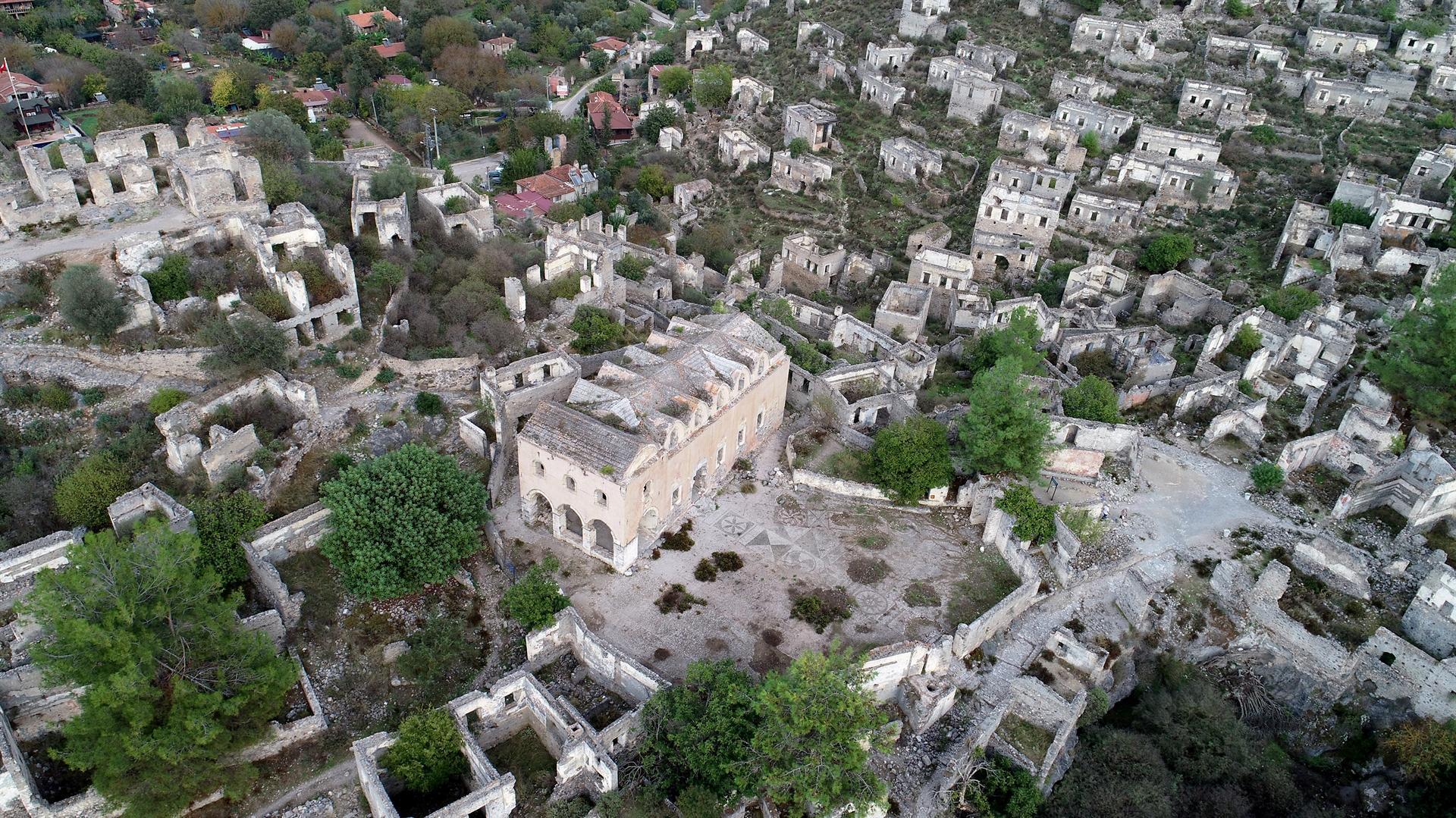
The historical churches in Kayaköy, known as “ghost villages” since it was abandoned 97 years ago in the western province of Muğla’s Fethiye district, will undergo restoration. The Kayaköy archaeological site, which is among the sensitive areas to be protected, hosts many local and foreign tourists every year.
Some 400 houses, two churches and chapels in the archaeological site take visitors on a journey through history. With the project prepared by the Muğla Culture and Tourism Directorate, the churches in Kayaköy will be restored and serve tourism.
Speaking to the state-run Anadolu Agency, Zekeriya Bingöl, Muğla provincial culture and tourism director, said that Kayaköy attracts the attention of local and foreign tourists with its settlement plan and historical texture.
Stating that Kayaköy, which has hosted commercials and music videos in recent years, is better known day by day, Bingöl said, “The church buildings in Kayaköy, to which the Culture and Tourism Ministry and Muğla Culture and Tourism Provincial Directorate attached great importance, will be renovated. Churches are at the top of the list of buildings that offer visual feast to the visitors. The restoration project prepared by the directorate will be financed by the Muğla Governor’s Office Investment Monitoring and Coordination Directorate [YİKOB] after it is approved by the conservation board.”
Emphasizing that Muğla is home to historically unique works, Bingöl stated that the works that are damaged through time will be brought to tourism in accordance with their original.
Bingöl said that those who choose to visit Turkey especially go to the historical areas of the country.
“Kayaköy was visited by 99,000 people last year, and approximately 38,000 by the end of October this year. Kayaköy will attract more attention after the restoration works. In the abandoned city, there are about 400 houses, each no larger than 50 square meters, that do not block each other in terms of view and light. In the city, which attracts people from an architectural point of view, there are also many chapels, two large churches, a school and a customs building scattered among the houses.”